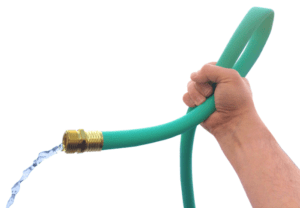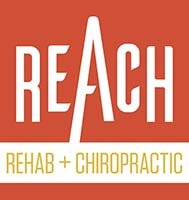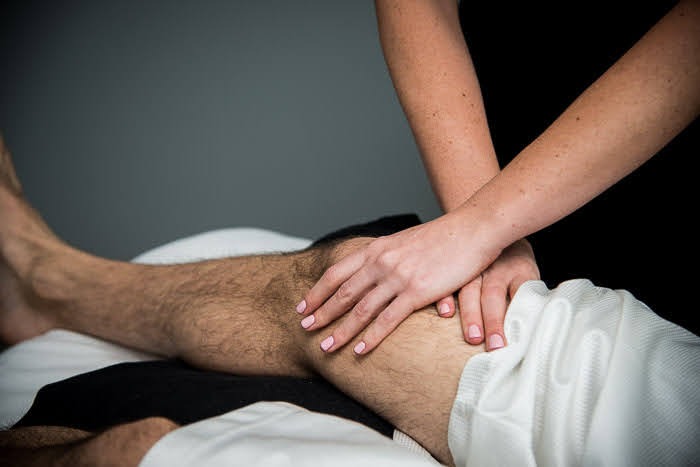What causes knee pain?
Does it hurt to move your knee? Maybe your knee hurts at rest. Do you have a structural injury, or a knee joint not moving properly? In this article, we discuss the causes of knee pain, where the source of the pain could be coming from, and how we approach addressing a knee issue.
Even if you have been struggling with knee pain for months, or even years, it’s not unusual to get better, quickly with the right care plan.
What is knee pain?
Knee pain is simply a painful symptom in or around the knee joint. However, you could be experiencing it for a multitude of reasons.
We often associate pain symptoms with structural issues, such as meniscus or ligament damage. Fortunately, knee pain is not often caused by a structural problem.
If you were not involved in a trauma, such as a major fall or a car accident, there’s no need to worry about damage to your knee. The odds of structural bone, ligament or tendon damage in the absence of trauma is extremely poor. On the contrary, if you suffered major trauma your chances of structural damage increase, but it is not absolute. Not every case of trauma-derived knee pain is a structural problem.
The most common source of knee pain is poor joint mechanics. An interference of proper joint movement eventually leads to sensitivity of nerves and soft tissue structures around the joint, thus causing pain.
When is it serious?
“But my physician took X-rays and told me my knees are bone-on-bone.”
Yes, arthritis is commonly found in the knee joints. Arthritis occurs in all joints of the body, especially as we age. If you’re over the age of 50, you’ve got arthritis — it’s a natural aging process. Arthritis is like wrinkles and grey hairs but on the inside. Unless you have arthritis beyond what’s expected for your age, it’s not the problem causing your pain.
RARELY is arthritis a cause of pain. It is more so a contributing factor. Arthritis can alter joint mechanics, increasing the sensitivity of surrounding tissues.
“But I was on the YouTubes and I think I have patellar tendinitis.”
Knee pain near the kneecap can be caused by a tendon issue called patellofemoral pain syndrome, or patellar tendinitis. The symptoms are usually present in athletes or individuals with a sudden increase in physical activity over a short period of time. However, if your knee pain is not activity-dependent — knee hurts when approaching the 2nd mile of the running — tendinopathy is less likely.
Unideal joint movement still more commonly causes anterior knee pain.
Your knee pain is more serious when it’s constant, excruciating, and severely limiting your ability to perform normal activities of daily living. If this has happened as the result of an injury or trauma, seek medical attention ASAP. If it’s been progressively worsening over months to years, hopefully, you’ve sought treatment at some point. If not, it’s not too late.
Can You Have Knee Pain Without Injury?
Not all knee pain is a knee problem.
Wait, WHAT!? I’ll explain.
Pain in the knee, or anywhere in the legs, is commonly a symptom of a low back problem.
“But I don’t have any back pain. How could knee pain come from my back?”
It’s likely you’ve heard of sciatica.
Sciatica is a common symptom originating from the low back. Classic sciatica presents as pain, numbness, or tingling down the back of the leg and can even travel to the calf or down to the foot.
Sciatica is most likely caused by irritation of joints in the low back. The irritated joints can cause interference of the nerves exiting the spine. The nerves exiting the lumbar spine on the left and right of the body converge to form the left and right sciatic nerves, which traverse down the legs.
Any irritation of low back nerves — due to poor joint mechanics — can produce symptoms anywhere along the path of nerves down the legs. And the symptoms, e.g., pain, numbness, tingling, burning, pins & needles, don’t necessarily travel like drawing a line from the back down the leg. Often, sciatica symptoms skip spots. It’s possible to have sciatica symptoms in only the hip and knee, absent of back pain.
Signs your knee pain may be a back problem:
- Knee pain accompanied by back pain or stiffness
- Worsens when sitting for long periods of time.
- Improves while or after walking
- No mechanism of injury such as a fall, repetitive strain, or overuse.
Kinked hose analogy: the issue is a lack of water flowing down the hose, but the source of the problem is the kink itself.

The low back is a more common cause of knee pain than you think.
What knee pain do I have?
When to seek treatment for knee problems
Knee pain can be difficult to treat on your own because you must first identify the source(s).
A clinician trained in Mechanical Diagnosis and Therapy (MDT) can clarify whether the symptoms are sourced from the low back, the sciatic nerve, the patellar tendon, or the knee joint itself.
Furthermore, there may be more than one source. Have you heard the saying, “you can have ticks and fleas?” We’ve seen both the low back and knee involved on several occasions.
Knowing the cause(s) of symptoms ensures the proper application of the best treatments and strategies to correct the problem as quickly as possible.
Hands-on active treatments with specific exercises have been proven to be the most effective. In rare cases is surgery absolutely needed. Can you imagine how many knee surgeries have been performed where conservative treatments of the knee failed, but the spine was never assessed as a possible source?!
Pain is frustrating. At REACH, we take the guesswork out of healing. We use a holistic chiropractic approach, assessing the body as a whole rather than treating just the symptoms. So you can do more than relieve pain. We teach you how to become unstoppable.


